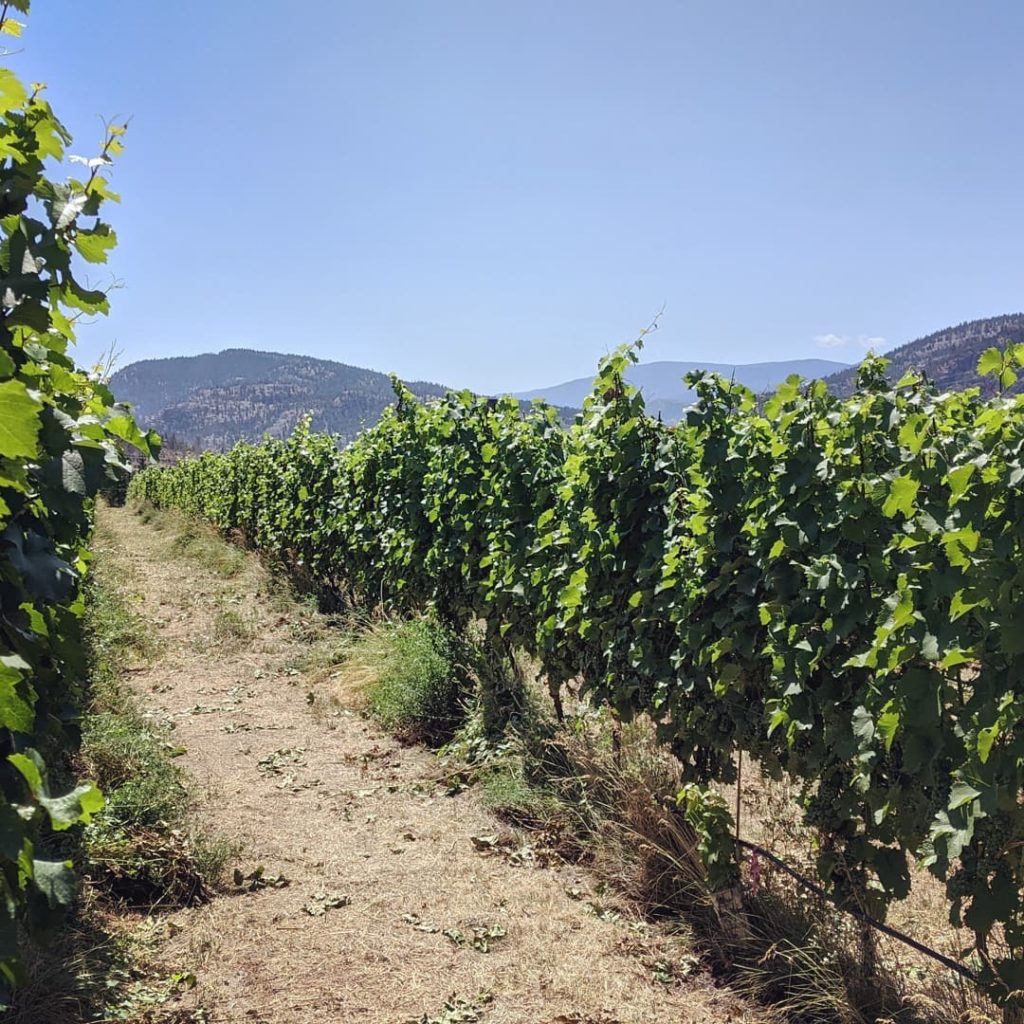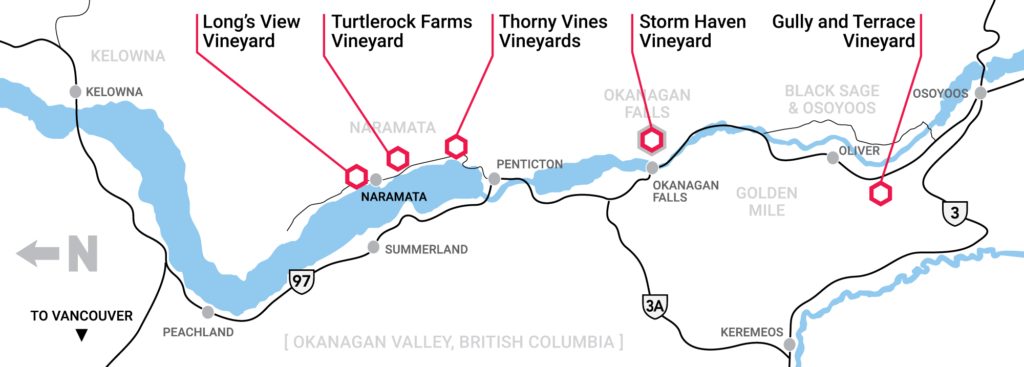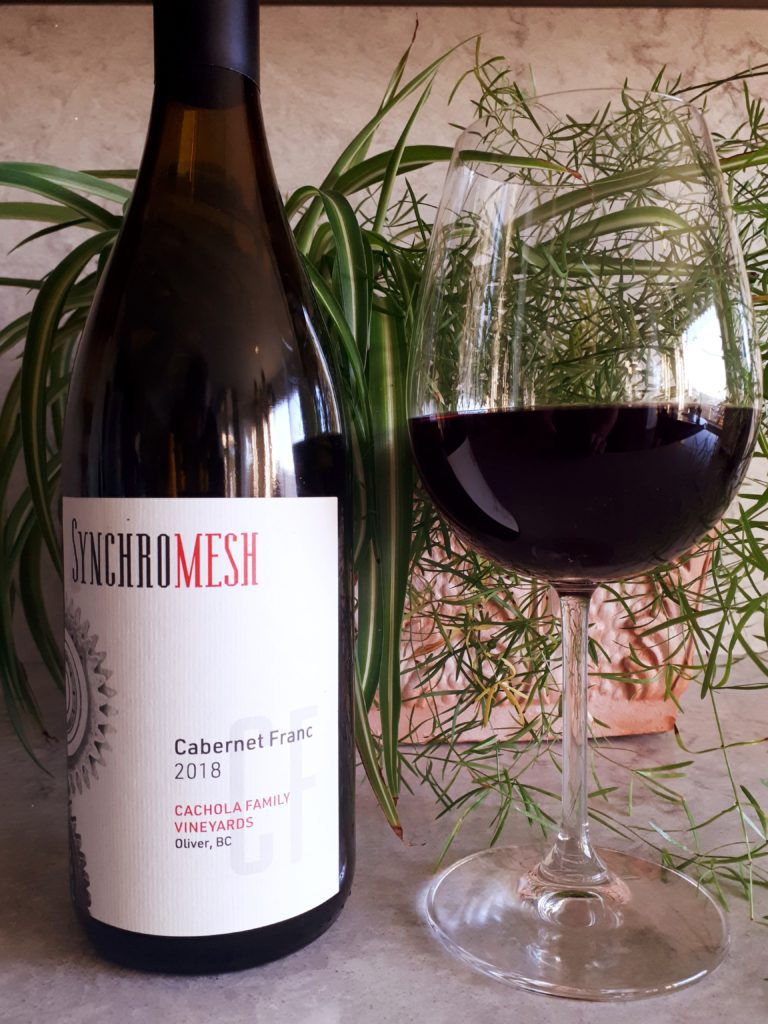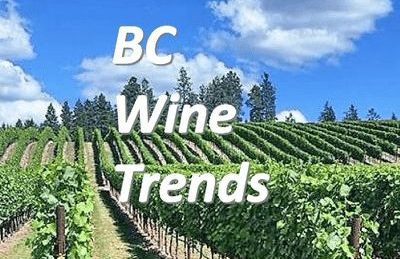
Synchromesh Wines is a boutique, family-run winery that specializes in Riesling grown on the estate vineyard in Okanagan Falls. Synchromesh also produces small amounts of Cabernet Franc, Merlot and a tiny amount of highly sought after Pinot Noir.
“We began our first steps in 2009 looking at potential sites suitable for growing high quality Riesling in British Columbia. It took the better part of a year, but by the Spring of 2010 we had purchased a 5 acre, partially planted property on a higher elevation, south-facing outflow above Okanagan Falls. Over the next few years, all but the original block of Riesling were replanted to additional Riesling and two small blocks of Pinot Noir. Right out of the gate, the wines from this property proved to be very different from anything in the Okanagan and the style of the minimalist winemaking and holistic farming began to shine through in the glass.”
Alan and Amy Dickinson, Co-Owners Synchromesh Wines
The Vineyards
The Synchromesh vineyards are located throughout the Okanagan Valley at specially chosen locations. The unique characteristics of each wine are the result of the specific location and terroir of the vineyard it has been grown. Read below to learn the full story of each vineyard. Please visit the Synchromesh website for more vineyard information.

Harvest 2021

“2021 was clearly a challenging vintage in the vineyard. Between extreme heat, drought, the Thomas Creek wildfire at our doorstep and labour challenges, the vines had a hard year as did our people. With the drought and heat, there was also tremendous leafhopper pressure on organic growers leading to complete canopy loss in some vineyards that I saw. We managed to weather these conditions and bring in some really nice fruit. The Rieslings are quite stunning at this stage and the cool, sopped in September gave us a great picking window to retain wonderful acids.
We do have some smoke effect showing up in our Pinot Noir and one of the two clones of Cabernet Franc we grow in Okanagan Falls and I have heard the same with varying severity from other wineries South of Penticton.”
Alan Dickinson
The Wines
Synchromesh is known for its Rieslings. For a change of pace, we were only able to taste the Cabernet Franc. The only 2020 vintage rieslings left for sale are for wine club members!
Synchromesh Cachola Family Vineyard Cabernet Franc 2018

The wine is a light version of the classic red (11.9% Alcohol). At first taste, I thought it was a pinot noir!
This will be the last vintage of this single-vineyard wine as the grapes from this vineyard are no longer sourced by Synchromesh.
The Cachola Family Vineyards’ west-facing slopes are just north of Oliver. The Cab Franc vines are rooted in gravelled clay soils.
Make sure you allow the wine to settle before pouring as the wine has light cloudiness due to low intervention winemaking. The wine is unfined/unfiltered and will carry some sediment.
The wine opens with a beautiful floral nose and flavours of red cherry, raspberry, plum, smoke and earthy undertones. The elegant medium-bodied wine has silky tannins and is chewy and complex with a green bell pepper finish. 91 Points
Here is the link to review the complete portfolio of Synchromesh wines.
Future Plans
“We are gradually growing into Storm Haven Vineyard which is our home property of 107 acres and over the next few years will head towards 6000 cases or so. We have some very exciting wines coming out of the different blocks we have planted here and as the vines mature I am choosing to separate more and more fruit for single block bottlings.
We will continue to carve our own path with holistic farming at Storm Haven, grounded in the support of the native ecosystem that we farm within the 70 acre habitat lands that we have chosen to protect. Farming in this way is a constant state of observation and adaptation to allow the vines to integrate into what was already here, to support this ecosystem and not fundamentally change it with our vines.”
Alan Dickinson
